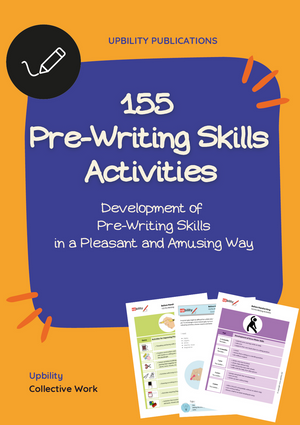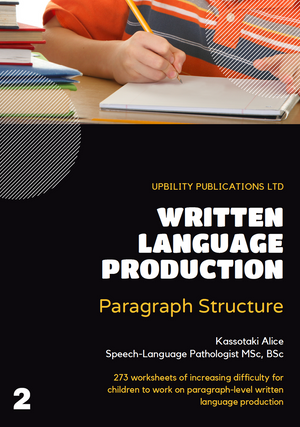
Reading comprehension and autism
Reading comprehension and children with autism.
According to scientific research, children acquire decoding and reading comprehension skills at the same time, but each skill develops independently of the other. Children with autism spectrum disorder (ASD) usually develop decoding skills, but have difficulty with reading comprehension. They can identify words relatively more easily than understanding what they have read. This may be attributed to the fact that comprehension is a more abstract skill than decoding.
Learners with autism can read and process written language in a fluent way, in contrast to children with dyslexia who often try hard to decode written language. However, these children are not always able to approach semantic meaning in the same way. They can have trouble visualizing action and understanding the social interactions upon which many storylines rely. A detail might absorb all their attention and prevent them from fully processing the rest of the text.
The cycle of reading comprehension difficulties

The above schema shows the complex nature of reading comprehension difficulties and the way in which it is associated with reading skills development. A child with reading difficulty problems may not be sure of their reading skills and may feel anxious about reading tasks. This may lead to the inappropriate use of strategies that are implemented during reading. Reading failure can contribute to lower reading expectations by the reader. This, in turn, may lead to avoidance of reading, resulting in reduced vocabulary development and a widening gap in performance as compared to other more successful readers. Reading difficulties and poor skills development are generally connected with fewer rewards. When children with poor reading skills compare themselves to other skilled readers in the classroom, they may think bad of themselves or start to have low self-esteem/self-concept. Thus, what may have started as a simple problem may over time develop into a complex cycle of reading failure and influence other personality traits.
Reading comprehension strategies
Strategies are not distinct behaviours. Children use them in many different ways and combine or incorporate them whenever they find it difficult to understand a text. Vocabulary knowledge and the interpretation of what has been read have a key position in all strategies.
1. Activating prior knowledge or making connections. Readers recall knowledge that has already been gained about the world, the words and the texts. They make associations; they apply this prior knowledge to understand the new knowledge offered by a text.
2. Making and verifying assumptions or predictions. Readers make assumptions about the texts before and during reading. Their assumptions will help them to make predictions. If they are good readers, they are going to check them with the new information in the text, in order to verify or revise these predictions. The assumptions can be based on any aspect of the text, such as the text structure, the subject matter, the size and shape of a text, or the context and the task within which the reading is required.
3. Identifying main ideas. Readers determine the most important or central ideas of the text. For this purpose, they draw on their prior knowledge and experience of the ways in which texts are structured (for example, they can use the knowledge that newspaper articles often state the main idea in the first sentence) to infer meaning and determine the relevant importance. Readers may also hypothesize and synthesize different aspects of the text in order to identify the main idea.
4. Knowledge of the structure of the text. The way in which a text is structured plays a major role in comprehension. Readers can use what they already know or what they are learning about the structure of the text in order to navigate and comprehend new texts.
5. Summarizing. Readers make rapid summaries (rather like making mental notes) of what they are reading as they work through a text, checking for connections and explanations.
In other words, they use their knowledge of topics, vocabulary and text structure to find and connect the important points of the text.
6. Drawing conclusions. Readers make assumptions to fill in gaps, as they read, trying to infer the information that the writer has not made explicit. To do this, readers rely on their background knowledge, testing hypotheses about the writer’s intentions.
7. Creating mental images or visualizing. During reading, readers construct mental images, in order to represent the ideas or the information in ways that help them relate them to their own knowledge. They also use mental images to help them discover, for example, patterns in ideas or text structure. This process will enable a deeper understanding of the text.
8. Asking questions about the text and seeking answers. Most readers always use the strategy of posing and answering questions, when they read a text, as this can help them understand its content. Questions may relate to the meanings of words or sentences, to the structure of the text as a whole, to the plot or character development in a story, or to any other aspect of the text and its context. Through asking questions, readers are able to form and test hypotheses, to make inferences, to summarize and coordinate the use of other comprehension strategies.
This is a new series of intervention resources entitled “Development of Reading Comprehension in Children with Autism Spectrum Disorder”. It is recommended for children who have severe difficulties in understanding texts. It consists of three parts with a brief theoretical background and various practice activities. The first part of the series describes seven levels of intervention of scaling difficulty. The material has been developed and tested in clinical practice with excellent results, depending on learners’ potential.
Keep Reading:
- Teaching Empathy Skills to Children With Autism
- Teaching Students with ADHD: Strategies for an effective lesson
- Are Autistic Girls Overlooked?
- Music Therapy: Autism Through Different Eyes
- 7 Key Social Skills to Help Children with Autism Cope with Bullying
- The Impacts Of Distance Learning A Review
- Consequences of poor processing speed
- Back to School: Making it Easier for Students With Learning Disabilities


